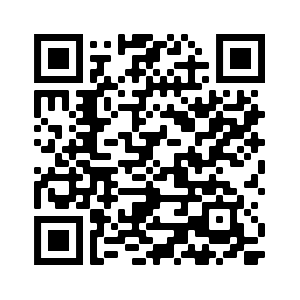Teachers have been experimenting with different approaches to teaching methodology for a long time now. To meet the needs and expectations of their learners, educators frequently continue experimenting with different tactics and modifying their style of instruction. When it comes to teaching approaches, there are two almost opposing approaches: Inductive and Deductive methods. We will describe both of these teaching approaches in this blog post, along with their main distinctions. Continue reading to know more about the same.
Contents
- 1 What is the Inductive Method?
- 2 What is the Deductive Method?
- 3 Difference between Inductive and Deductive Methods of Teaching
- 4 Which is More Effective: Inductive or Deductive Methods of Teaching?
- 5 Advantages and Disadvantages of Inductive Teaching Methods
- 6 Advantages and Disadvantages of Deductive Teaching Methods
- 7 Difference Table of Inductive and Deductive Methods
- 8 FAQs
What is the Inductive Method?
In the Inductive method of teaching, learners are presented with the examples first and then they have to figure out the rules. Teachers act more as a guide instead of spoon-feeding every piece of information to students. Teachers allow students the space to notice and figure out or observe the examples and find out how the concept works. This helps students brainstorm. They start figuring out the structure or the rule from the examples and find the answers all by themselves.
Also Read: Learning Outcomes in Teaching: Types and Benefits
What is the Deductive Method?
The deductive method, which has been around for ages, is a conventional approach to teaching grammar or language rules. The teacher gives the rules out front and then provides a series of examples that correlate to the rules. After mastering the terminology, learners quickly transition to comprehending it through a series of examples.
Here, the teacher handles everything using an old technique. To help people grasp the examples more clearly, guidelines are established, followed by an explanation of the rules and examples. Since very little interaction occurs in this type of instruction, students are merely observers and simply learn what the teacher is teaching them.
Also Read: Top 6 Assessment Tools for Teachers
Difference between Inductive and Deductive Methods of Teaching
Now that you have a clear understanding of what the Inductive and Deductive methods of teaching entail. Let’s take a look at the differences between the two:
1. Teacher’s Role
Teachers take the lead and play from the centre when using the Deductive method. They handle every aspect of the class, including lesson planning, establishing ground rules, explaining topics, and providing answers to any queries that may arise to clear any students’ doubts.
In contrast, a teacher’s position in the Inductive Methodology changes to that of a guide.
2. Learner’s Participation
There is nearly minimal student or learner participation in the deductive methodology. They listen and may or may not sporadically pose a few queries. They have a major duty to pay close attention to what is being explained and to take notes at the same time. Sometimes it’s difficult for some of the students to do this.
On the other hand, learners actively participate in the entire learning process while using the inductive method. The entire teaching and learning process becomes dynamic and efficient. Because both sides feel involved in the process, this strategy greatly strengthens the link between the learner and the teacher.
3. Methodology
Unlike the inductive technique, which is focused on finding and exploring, the deductive method of teaching is more explanatory. The only people who can explain the regulations are the teachers. On the other hand, the inductive approach is firmly grounded in the self-discovery of ideas and things, which serves to pique attention throughout the entire process.
Which is More Effective: Inductive or Deductive Methods of Teaching?
By now, you must be aware that the Inductive method involves teachers observing their students and encouraging them to participate in and enjoy the process of learning. Additionally, they are aware of what the students in the classroom require to conduct the full lesson more effectively. On the other hand, the main component of deductive teaching is having teachers prepare lesson plans in advance and carry them out through the entire lesson.
Which of the aforementioned methodologies works best for curious minds is a topic of constant discussion. It is critical to recognise that when it comes to teaching, there is no one best method. Each strategy has benefits and drawbacks. Everything relies on the instructor and the subject. A teacher can go from inductive to deductive reasoning and vice versa, as well as employ both simultaneously. When generating hypotheses during the knowledge transfer process, inductive teaching is frequently employed, and when verifying the hypothesis, the deductive technique is employed.
Nonetheless, the inductive approach is highly well-liked by educators since it encourages the developmental process as opposed to the deductive approach, which places greater emphasis on the memory of the subject matter and seldom takes the concept of growth into account.
One of the main reasons the inductive teaching technique is so popular is that it fosters student engagement, whereas the deductive method treats students as passive learners.
Also Read: Top 6 Homework Help Websites for Students
Advantages and Disadvantages of Inductive Teaching Methods
These points help students clearly understand when the inductive method is most effective and where its limitations may arise.
| Advantages of the Inductive Teaching Method | Disadvantages of the Inductive Teaching Method |
| Encourages active participation and discovery | Time-consuming compared to direct teaching |
| Helps students understand concepts deeply | Students may reach incorrect conclusions without guidance |
| Improves problem-solving and critical thinking skills | Not suitable for all topics, especially complex formulas |
| Makes learning more interesting and engaging | Requires more planning and preparation from the teacher |
| Promotes long-term retention of knowledge | |
| Builds confidence as students form rules on their own |
Advantages and Disadvantages of Deductive Teaching Methods
These advantages and disadvantages show how the deductive method offers clarity and speed but needs balanced teaching to ensure meaningful learning.
| Advantages of the Deductive Teaching Method | Disadvantages of the Deductive Teaching Method |
| Saves time and allows quick delivery of information | Can be less engaging and mostly teacher-centred |
| Provides clear, structured, and direct explanations | Students may memorise rules without real understanding |
| Best for teaching rules, formulas, and definitions | Offers limited scope for exploration and creativity |
| Works well in large classrooms | May not develop deep conceptual thinking |
| Helps students practice and apply concepts quickly |
Difference Table of Inductive and Deductive Methods
This table gives a clear overview of how the inductive and deductive methods differ, helping students understand both approaches more effectively.
| Basis of Difference | Inductive Method | Deducive Method |
| Approach | Bottom-up approach | Top-down approach |
| Starting Point | Begins with a specific example or observation | Begins with general rules, principles, or formulas |
| Process | Students observe, analyse, and derive the rule themselves | The teacher explains the rule first, and students apply it |
| Learning Style | Discovery-based, exploratory | Rule-based, structured |
| Role of Students | Highly active and involved in fishing the rule | Mostly follow instructions and practice applications |
| Role of Teachers | Facilitator or guide | Instructor or explainer |
| Best for | Introducing new concepts, patterns, grammar rules, and basic operations | Practising rules, formulas, theorems, and definitions |
| Understanding Level | Deep understanding because rules are discovered | Faster understanding, but may be shallow if memorised |
| Time Required | More time-consuming | Less time-consuming |
| Risk or Limitation | Students may derive incorrect rules without guidance | Students may memorise rules without understanding |
| Example | Students see examples of nouns and conclude what a noun is | The teacher defines a noun, then gives examples to practice |
Also Read: Top 6 Effective Classroom Teaching Methods
Understanding the Inductive and Deductive Methods helps students learn better, and teachers teach more effectively. While the inductive method promotes discovery and exploration, the deductive method ensures clarity and quick understanding. Using both methods together creates a balanced and powerful learning experience.
FAQs
Ans: In the Inductive method of teaching, learners are presented with the examples first, and then they have to figure out the rules. Teachers act more as a guide instead of spoon-feeding every piece of information to students.
Ans: The deductive method, which has been around for ages, is a conventional approach to teaching grammar or language rules. The teacher gives the rules out front and then provides a series of examples that correlate to the rules.
Ans: Unlike the inductive technique, which is focused on finding and exploring, the deductive method of teaching is more explanatory. The only people who can explain the regulations are the teachers. On the other hand, the inductive approach is firmly grounded in the self-discovery of ideas and things, which serves to pique attention throughout the entire process.
Ans: An example of the inductive teaching method is the “discovery learning” approach in grammar instruction.
Example: Teaching the Simple Past Tense
Instead of directly explaining the rules of the simple past tense, the teacher presents students with a set of sentences:
She walked to school yesterday.
They played football last evening.
He visited his grandmother last week.
The teacher then asks students to analyse the patterns and identify the rule (i.e., past tense verbs often end in -ed for regular verbs). This method encourages students to observe, analyse, and derive grammatical rules on their own, fostering deeper understanding and retention.
Ans: Inductive learning is a bottom-up approach where students observe examples, recognise patterns, and derive general rules on their own, fostering critical thinking and discovery. In contrast, deductive learning is a top-down approach where teachers first explain the rules, followed by examples and practice. Inductive learning enhances engagement and exploration, while deductive learning ensures clarity and efficiency. Both methods are valuable, depending on the subject, students’ learning styles, and lesson objectives.
Ans: The inductive method was introduced by Francis Bacon, an English philosopher and scientist. He emphasised empirical observation and systematic experimentation to derive general principles from specific observations. His approach laid the foundation for the scientific method and greatly influenced modern teaching and research methodologies.
Ans: Another example of deductive learning is teaching subject-verb agreement in English grammar.
Example: Teaching Subject-Verb Agreement
The teacher first explains the rule: A singular subject takes a singular verb, and a plural subject takes a plural verb.
Example: “He plays football.” (Singular)
Example: “They play football.” (Plural)
The teacher then provides additional sentences and explains the application of the rule.
Students practice by identifying errors or completing exercises.
This method follows a top-down approach, ensuring clarity before application.
Related Blogs
Follow Leverage Edu for more informative and interesting reads on School Education.
 One app for all your study abroad needs
One app for all your study abroad needs














